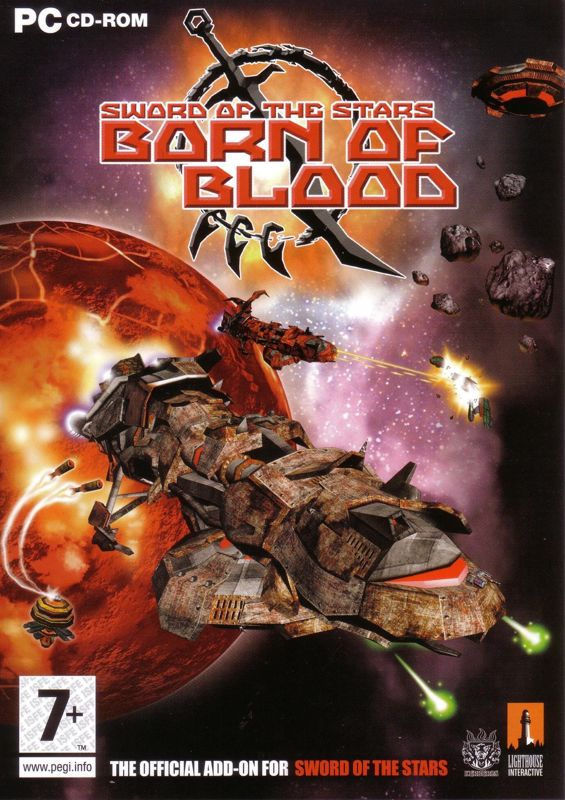Retro Replay Review
Gameplay
Sword of the Stars: Born of Blood expands the core 4X mechanics of the original game with a wealth of new content that feels both meaningful and well-balanced. The introduction of the Zuul slavers brings a dynamic threat that shifts the diplomatic and military landscapes of every match. Players must now juggle alliances, espionage, and the looming menace of psychic powers while managing traditional research, colonization, and fleet production. The added tunnel drive technology and 90 new ship sections allow for deeper strategic customization, making each fleet composition feel unique.
Diplomacy in Born of Blood has been greatly enhanced, pushing players to negotiate with rival races or forge temporary truces to stave off the Zuul invasion. The new tech tree branches—especially those focused on intelligence gathering and diplomacy—reward a more calculated approach, encouraging scouting missions and covert operations. This layer of intrigue elevates the 4X formula, demanding as much diplomatic finesse as tactical acumen on the battlefield.
The scenarios and galactic encounters included in this expansion inject variety into the late-game phase. With three unique scenarios and six original maps, no two campaigns feel identical. Random encounters add unpredictable twists, from pirate raids to emergent threats that test your empire’s defenses and alliances. These events are not mere flavor text; they can have lasting consequences, reshaping trade routes or tipping the balance in a multi-faction conflict.
Multiplayer veterans will appreciate the refined GUI and network enhancements, which streamline hotseat, PBEM, and real-time matches. Born of Blood’s improvements minimize downtime between turns, keeping players engaged throughout lengthy sessions. Whether you’re facing off against human rivals or challenging the AI-controlled Zuul menace, the pacing and depth strike an excellent balance for both casual and hardcore 4X enthusiasts.
Graphics
Visually, Born of Blood remains faithful to the aesthetic established by Sword of the Stars, featuring richly detailed star systems, vibrant nebulae, and crisp ship models. The new Zuul vessels stand out with menacing design elements—darker hulls, glowing psychic conduits, and elongated prow structures—that underscore their slave-driving cruelty. These visual cues not only add thematic flair but also help players immediately identify ship classes during heated battles.
The updated GUI offers cleaner fonts, clearer icons, and better-organized menus, reducing the friction often encountered in deep strategy titles. Tooltips and information pop-ups have been enhanced to provide relevant data at a glance, helping newcomers learn the ropes without sacrificing the kind of granular control veteran strategists crave. Fleet management screens and colony overviews feel more intuitive, letting you focus on big-picture decisions rather than wrestling with clunky interfaces.
Space battles, while not visually groundbreaking compared to modern real-time strategy games, still pack a punch. Explosions, weapon beam effects, and engine trails look crisp and vibrant against a star-studded backdrop. The addition of psychic weapon animations adds a fresh layer of spectacle, making endgame clashes against the Zuul memorable. All told, the graphical presentation supports the strategic depth perfectly, ensuring clarity and thematic immersion without unnecessary bells and whistles.
Story
Set in the year 2445, Born of Blood picks up three decades after the first stellar empires emerged from isolation. A fragile peace persists between the four well-known races, until rumors of a brutal new power—long whispered about—materialize as the Zuul slavers. This narrative framework provides an excellent backdrop for emergent stories: a betrayed alliance, a desperate race for advanced technology, or the covert rescue of enslaved populations.
The expansion’s three scenarios each tell a distinct tale. Whether you’re racing to reveal the Zuul homeworld, defending a battered alliance from psychic onslaughts, or forging a coalition among former enemies, the scenarios provide tightly focused objectives that complement the open-ended sandbox mode. In every case, voiceover briefings and descriptive event text help build tension and underscore the moral stakes at play.
Beyond scripted events, the diplomatic communications system adds a dynamic storytelling element. AI personalities have distinct negotiation styles—some pragmatic, others duplicitous—so forging and breaking treaties can feel like playing a high-stakes game of interstellar poker. When the slave trade becomes a bargaining chip or a cause for outright war, the story feels driven by player choices rather than preordained plot beats.
Overall Experience
Sword of the Stars: Born of Blood succeeds as both an expansion and a standalone testament to deep 4X strategy design. It enhances the original game’s strengths—diverse races, meaningful research paths, and tactical ship-to-ship combat—while adding enough fresh content to revitalize each campaign. The threat of the Zuul slavers provides a unifying arc that both veteran commanders and newcomers can rally against.
The blend of diplomacy, espionage, and traditional conquest is finely tuned, offering multiple viable paths to victory. Players who favor trade and treaties can outmaneuver rivals in council chambers, while those drawn to all-out war can build terrifying fleets bristling with psychic weapons. The balance between these approaches ensures that no two playthroughs feel identical, and the expanded scenario roster guarantees high replayability.
Born of Blood is highly recommended for anyone who enjoyed the original Sword of the Stars or seeks a deep, engaging 4X space strategy experience. Its enhancements to gameplay, graphics, and narrative weave together into a cohesive package that rewards strategic planning, diplomatic savvy, and tactical execution. For players ready to face the Zuul menace, this expansion is an essential voyage into the darker reaches of the galaxy.
 Retro Replay Retro Replay gaming reviews, news, emulation, geek stuff and more!
Retro Replay Retro Replay gaming reviews, news, emulation, geek stuff and more!




Reviews
There are no reviews yet.